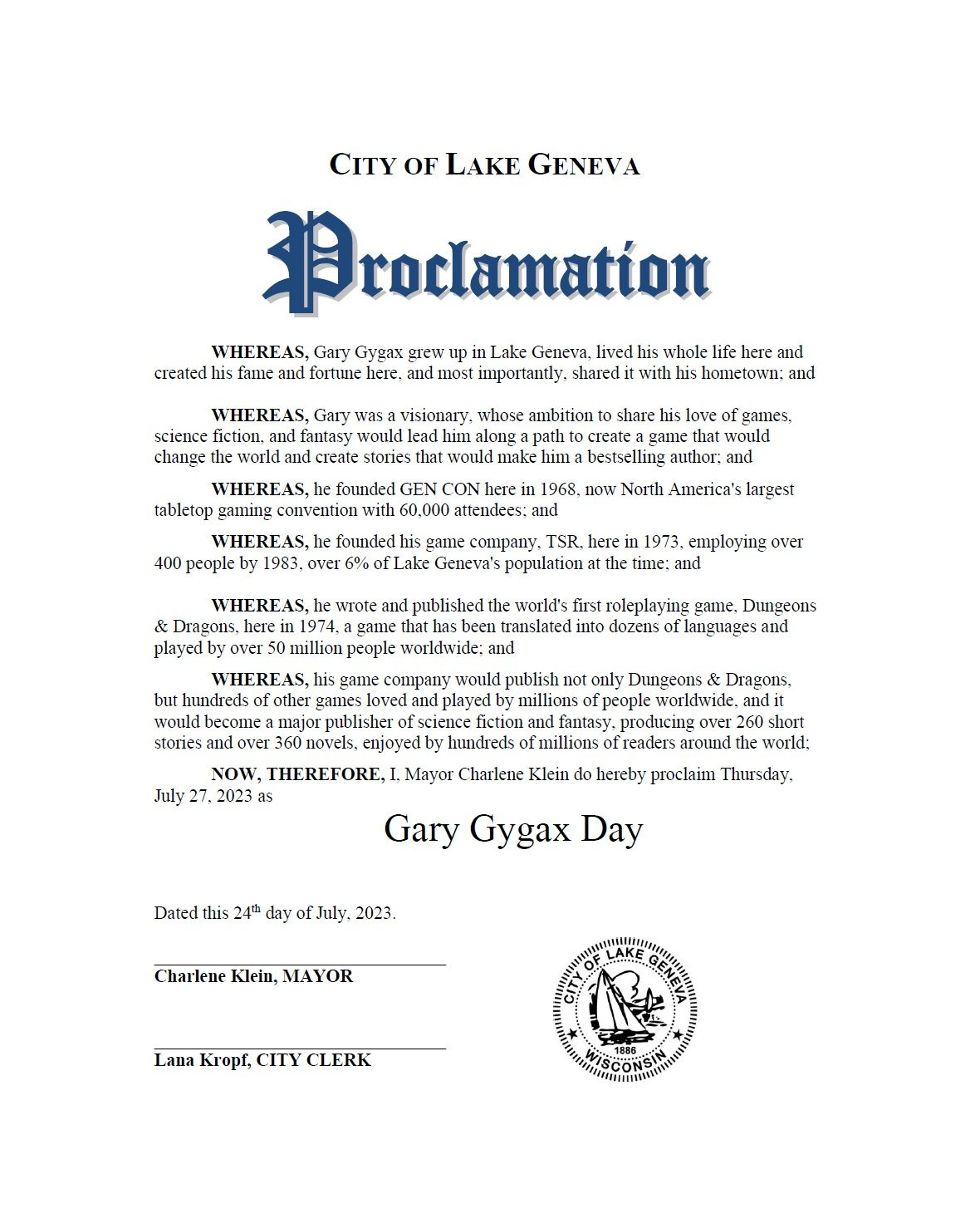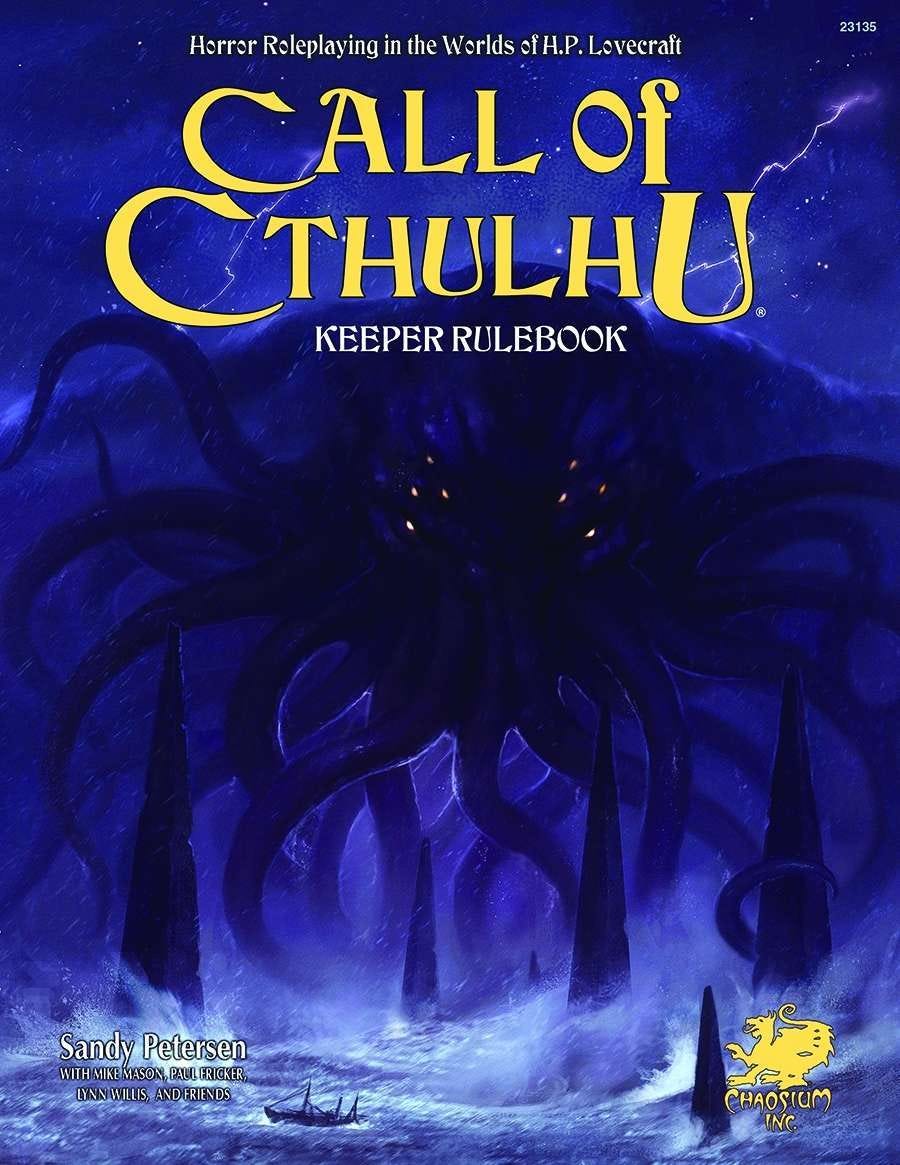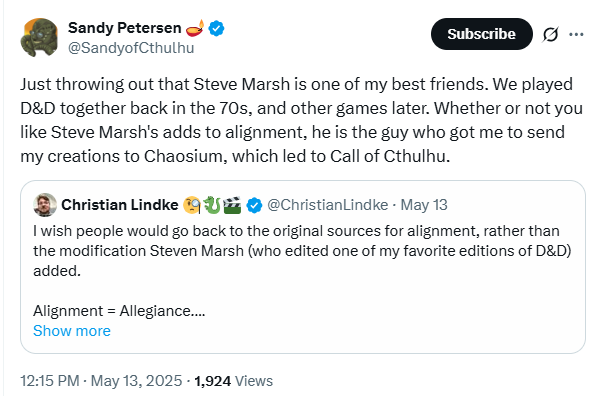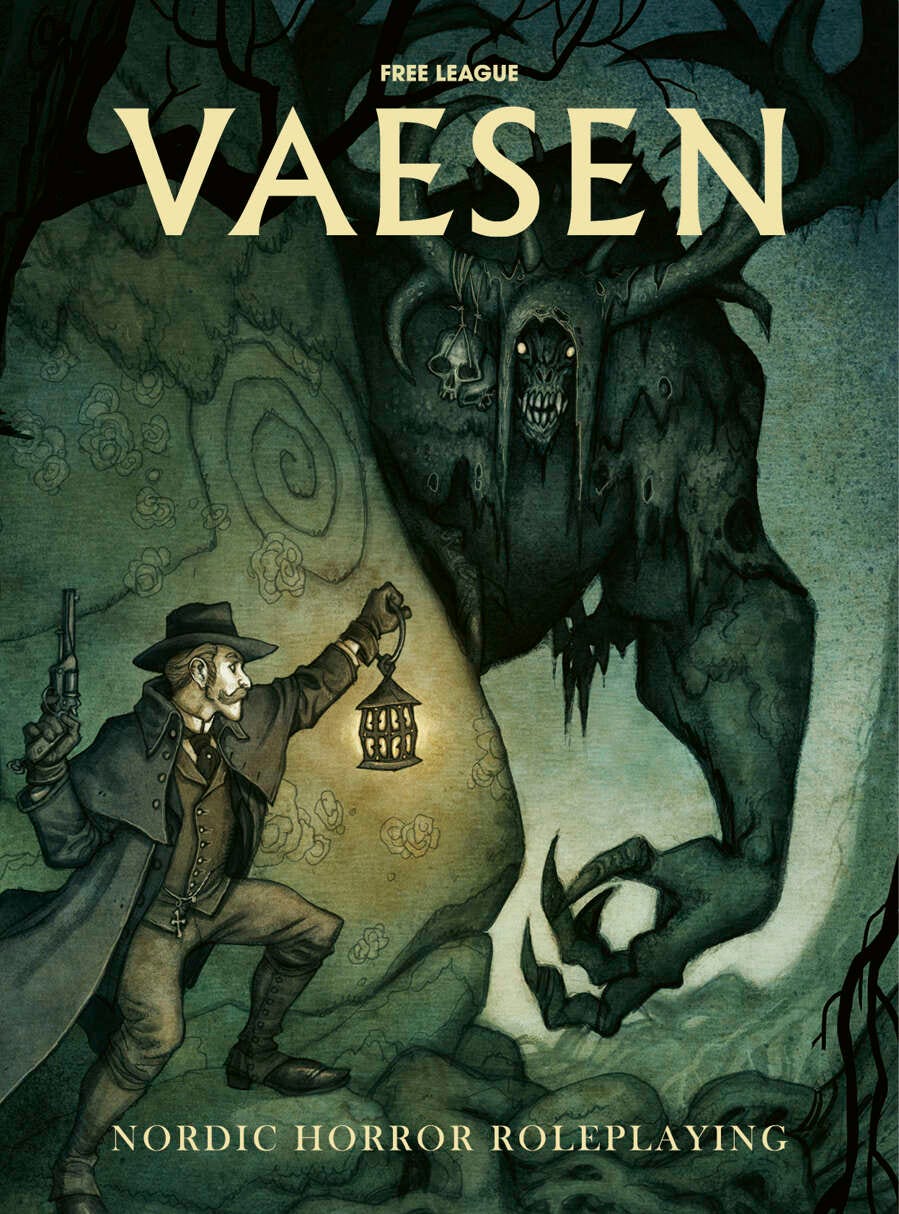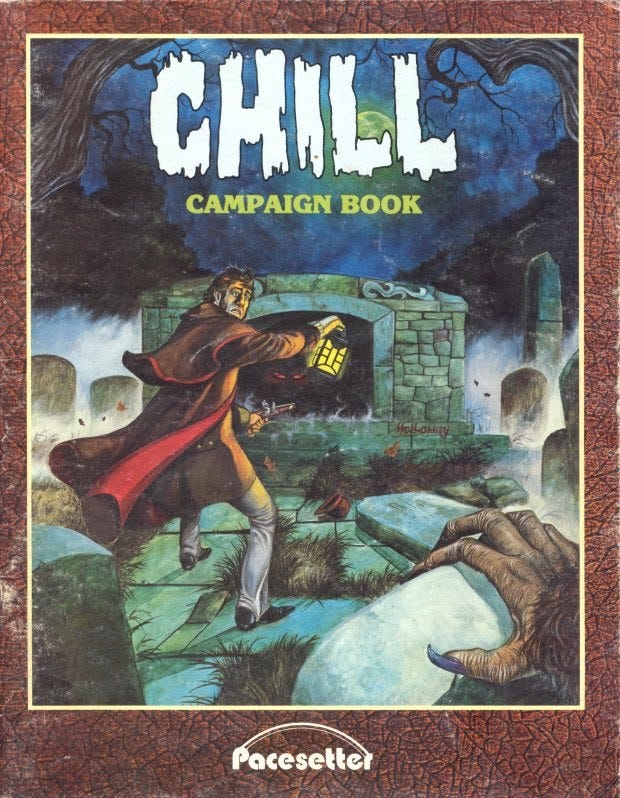Independent RPG Month 2025: Week Four Recommendations
Friday is Gary Gygax Day. Happy Gary Gygax Day! Now Let’s Talk About Some Independent Games!
On July 24th, 2023 the city of Lake Geneva, Wisconsin finally decided to recognize one of its most famous residents and the co-founder of what was once one of the city’s largest companies. Gary Gygax co-created Dungeons & Dragons, the first commercially available role playing game, and was the co-founder of Tactical Studies Rules (TSR Hobbies). The company was founded in 1973 by Gary Gygax and Donald Kaye. Gygax and Kaye were childhood friends who formed the Lake Geneva Tactical Studies Association in 1965, a military miniatures society where Gygax, Kaye, and their friends played a variety of miniatures war games.
After Gary Gygax visited Dave Arneson in the fall of 1972, where David exposed Gygax to role playing for the very first time and where Gygax’s party fought FOUR BALROGS, Gygax and Kaye decided to start their own company to publish a game that captured what they had just experienced. Gygax, Kaye, and their friends (who included Rob Kuntz) begain playing a prototype of Dungeons & Dragons where Kaye played a character called Murlynd (also Merlynd). Murlynd was an interesting early character in that he was a gunslinger in a fantasy setting and Kaye’s love of Westerns would inspire Gygax to later publish the Boot Hill game in his memory.
Kay tragically died of a heart attack at the age of 36 on January 31, 1975, so he was never able to see the success of Dungeons & Dragons and though Gygax was able to see that success, he was eventually pushed out of the company he founded and would eventually watch the company he created move from Lake Geneva to the Pacific Northwest.
Given that this week features Gary Gygax Day, there are two ways I could have approached this week’s recommendations. I could have focused this week’s recommended list of independent role playing games on those that simulate the kinds of games Gary designed, but most of them are too D&D adjacent to include in the recommendations. You don’t see a lot of Cyborg Commando or Dangerous Journeys/Mythus clones in the modern market, but you do see a lot of AD&D and D&D clones and extensions. I’d be very willing to buy a Cyborg Commando update, one that made individual characters more unique and that made the combat system more fluid, but I don’t think that will be coming down the pipeline any time soon.
I also could have provided a list of role playing adjacent miniature skirmish games like Frostgrave or another similar game. Dungeons & Dragons did arise from the wargaming hobby after all, and as I discuss in the article below, far too little attention is paid to the British Wargaming Scene when we discuss the history of role playing games.
When Discussing Early RPGs and Wargames, Let's Not Forget the British Scene
This is the first in a series of posts discussing the British Wargaming Scene and D&D that I’ll be doi…
Tony Bath’s Hyborian Age miniature wargame campaign was very much an exercise in role playing, though the roles being played were the commanders of armies. Even as role playing games transitioned from the realm of wargaming and into “assuming the roles of average individuals” in the Braunstein games of the Twin Cities, it was still a wargame at the center of play. Dave Arneson and his crew were inspired by the Strategos rules created by Charles Totten in 1880. Don’t believe me? Well, maybe you might believe them. Strategos is an interesting wargame system, one that a creative person (and Arneson was a very creative person), could adapt to a variety of circumstances. This isn’t to say that Braunsteins were Strategos sessions, just that they are there in the DNA. So too are Bath’s rules a part of Dungeons & Dragons. Bath’s rules for medieval battles influenced Chainmail and thus have had some influence on every die based miniature wargame ever produced. They weren’t the first wargame to leave behind peashooters for dice, but they were the most ubiquitous. By the time Bath’s rules for medieval battles were published in the British Model Soldier Society Bulletin in 1956, the Society had been using rules designed by Bantock and Cass that replaced H.G. Wells’ peashooters with die rolls. Sadly, I’ve never been able to find a copy of the Bantock-Cass rules in print or pdf. I have a copy of issue 1 of the 1954 Bulletin (and the full run of the 1956 meaning I do have a copy of Bath’s originals), but the Bantock-Cass rules are supposedly in issue 2 and that one has eluded my grasp.
It never ceases to amaze me how different the British historians of the hobby are from the American ones. Scholars like John Curry, of the History of Wargaming Project, relentlessly hunt down versions of the older rules in order to write books about the history of wargaming and to publish these same rules in inexpensive collections that allow later generations to see and play the games without needing to be wealthy collectors. American scholars like Jon Peterson, on the other hand, hunt down versions of the older rules, letters, paraphernalia, and drafts in order to write excellent books on the history of role playing games (and Jon’s books are phenomenal), while never making any effort to collect these in inexpensive offerings for later hobbyists. Peterson often says that much of what he references is available for free.
This is true if you happen to be a grad student at UC Riverside as I am, but it isn’t true of the general hobbyist. So instead, we have collectors hoarding all the rare drafts and paraphernalia without a research copy for the public. If one was worried about diluting the value of the originals by having reprints, and that’s a legitimate concern for collectors, one only need look at John Curry’s example. He provides edited new versions. This means that the inexpensive ones aren’t the old typewritten/hand drawn pieces of the past, rather they are a new thing that has the content but not the artifact quality. It’s a nice compromise and I’d like to see more of that on the American side. I will say that the good folks who publish Alarums and Excursions, one of the oldest role playing game fanzines, offer every issue of the zine for sale as a digital file at a very reasonable price and that doesn’t seem to have affected the collector price of originals much.
I could have gone that direction, but discussion of miniature wargames and how they influenced D&D and were then themselves changed by D&D is a discussion for another time. Let’s just say that Tony Bath’s rule for Ancient Wargaming might have influenced D&D, but D&D certainly influenced the creators of Games Workshop and without that there’d be no Warhammer.
Since that discussion will have to wait, and because I don’t want you to have to read past posts to get the full list of games, here are my recommendations so far.
July 1 — Tunnels and Trolls
July 2 — Good Guys Finish Last
July 3 — Champions
July 4 — Dragon Warriors
July 5 — Troika
July 6 — Savage Worlds
July 7 — Castle Falkenstein
July 8 — Fantasy AGE by Green Ronin Publishing
July 9 — Inspectres from Momento Mori Tactics
July 10 — Warhammer Fantasy Roleplay 4th Edition
July 11 — Traveller by Game Designer’s Workshop
July 12 — Hero Kids
July 13 — Beach Patrol by Gallant Knight Games
July 14 — Runequest from Chaosium Games
July 15 — Dragonbane
July 16 — Villains & Vigilantes edition 2.1 by Monkey House Games
July 17 — Warhammer Age of Sigmar Soulbound by Cubicle 7
July 18 — Masks: A New Generation
July 19 — Mazes by 9th Level Games
July 20 — Symbaroum by Fria Ligan
July 21 — Leagues of Adventure from Triple Ace Games.
Geekerati Tabletop Game Recommendations for Week Four
As you can see from the list above, I’ve recommended 21 games that run the gamut of genre and mechanical styles, but this week I’ve opted to do something a little different. Every game this week is in the same genre. In case you were worried that it was super hero rpgs, it isn’t. This week, I’ve decided to focus on the horror genre. The games listed this week each offer a unique perspective or setting for the horror genre. Since I’ve already taken up a large amount of time in prelude, I won’t provide too much discussion of mechanics or history in each entry but I will still provide pictures of the game and the reason the game was selected.
As before, my official criteria for what constitutes an Independent RPG are:
That the game is not produced by Wizards of the Coast/Hasbro
That the game is not a D&D clone or directly D&D adjacent.
The game must be currently available for purchase in either print or pdf form from a legal seller.
July 22 — My Life with Master
My Life with Master was designed by Paul Czege and embodies a lot of the preferences of the story gaming community in the early 2000s. Many story games migrated away from tactical combat and focused on mechanics that examine interpersonal relationships and humanity, often in disturbing ways. My Life with Master is a potentially deeply disturbing game where the players take the role of minions for a villainous “Master” (played by the GM) who is the cause of fear and dread over a local village. Your first thought might be that you are portraying Igor to the GM’s Frankenstein. That’s one possibility for a PC. Another possibility is to play The Creature itself as well. The players try to gain enough humanity, self-possession, and “love” to rise up against the Master, but must do his will as they grow. I don’t think it’s an accident that a lot of modern role playing game safety tools came out of the story gaming community, though discussions of such tools date back much further and include discussions in Interactive Fantasy in the early 90s. When you are dealing with subjects as dark as what many story games were focused on, you need to make sure that everyone is on board and to set norms of what is acceptable in your group. I’ve touched on how dark this game is in the past and I’ll do a future deep dive discussion on the “Magic Circle” and its relationship to safety tools at a later date, but in a game like My Life with Master it is vital that everyone know the boundaries of play. This is not a game to play with an edgelord, unless everyone in your group is an edgelord.
July 23 — Shiver
Shiver from Parable Games is a game I hadn’t heard of prior to backing the Kickstarter for the “Gothic” expansion to the game, but I’m glad I discovered it. Stylistically, I think it’s a really cool game, but I am most fond of its mechanics. It’s a simple die pool system where players have statistics with an “Attribute” rating and a “Talent” rating. These are combined to create die pools of differing types and you try to roll successes to achieve actions. All fine and good and typical so far, but when you look at the talent die you notice a little echo of John Harper’s Lasers & Feelings. The talent die has different possibilities when used on mundane or arcane actions. I will do a longer review later, but this is a very cool game.
July 24 — Mothership
It’s not often that a game builds a huge community, expansions, and spinoffs when you’ve only printed a part of the full game, but that’s what Sean McCoy’s Mothership has done. The only rules available so far, unless you backed the Kickstarter or did a late pledge, are those in the Player’s Guide. The game incorporates three different die mechanics, but the primary one is percentile based and there are enough rules in the Player’s Guide and sample adventure to build off from and boy did the community do just that. Mothership made it clear that there was a market and community for horror games outside of It Which Shall Not Be Named because it’s the dominant game in the genre.
July 25 —Never Going Home
Never Going Home isn’t a horror game where you experience a lot of jump scares, though I guess that could happen, but it is one where you imagine the horrors of a very real and terrible war with the addition of supernatural elements. It’s Gallipoli without the laughter. Because the game makes it easy to create new characters, and is unit rather than individual focused, the terror comes not from a single loss but from repeated loss as the game moves forward. It’s the kind of dread you feel as you realize, around hour 15 of playing Darkest Dungeon, that you’ve come to think of the adventurers as disposable resources to be managed and begin to wonder why that doesn’t upset you more, but of course in wondering you are beginning to feel the real sense of dread.
July 26 —Call of Cthulhu
No list of horror role playing games would be complete without the inclusion of the giant in the room. Call of Cthulhu is THE horror role playing game. Chaosium was founded by Greg Stafford as a way to combine his love of gaming with his desire to write fantasy fiction. After attempting to sell his thematic and highly narrative wargame White Bear and Red Moon to a number of publishers, he consulted Tarot cards and decided to go it on his own. White Bear and Red Moon was based in his own fantasy world Glorantha and allows players to experience a particularly important time period in Stafford’s setting. That game was a success and Stafford expanded the company to publish support material for White Bear and Red Moon and follow up board games. After several successful board war games, Stafford decided to expand into role playing games.
The first Chaosium role playing publication was a series of monster books called All the World’s Monsters that included a set of optional rules for D&D designed by Steve Perrin. These alternate rules were a big part of the California gaming scene, being passed around at DunDraCon and working their way through the whole California scene, and were given the name The Perrin Conventions. Volume II of All the World’s Monsters includes creatures designed by Tunnels & Trolls creator Ken St. Andre (who would design the Stormbringer RPG for Chaosium) and a copy of The Perrin Conventions.
Dave Hargrave, the creator of Arduin, also designed a number of monsters in the series and Chaosium initially wanted to release Arduin as their first full roleplaying game, but decided against it for a variety of reasons. Instead, Stafford rightly decided that a game based on his Glorantha setting should be the foundation for the company and when Steve Perrin was hired to help the team design the Glorantha game, RuneQuest was born. The mechanics Perrin designed for RuneQuest eventually became the foundation for the Basic Role Playing system, arguably the first universal role playing system.
Chaosium had intended to publish a game called Dark Worlds (originally Dark Shadows) designed by frequent Chaosium contributor Kurt Lortz. That game would have been a 19th Century game of Gothic Horror with Lovecraftian undertones. Chaosium acquired a license from Arkham House in anticipation of the game, but eventually rejected the game. Steven Marsh, an important name in Basic D&D and the creator of the Good/Evil axis for alignment in D&D among other amazing contributions, wrote a mini-game called American Gothic (the link to
’s Grognardia blog has a link to the manuscript) that incorporated Lovecraftian themes on a D&D shell that Sandy Petersen (designer of Call of Cthulhu) has called the “alpha version” of Call of Cthulhu.Steven Marsh and Sandy Petersen are both members of the Church of Jesus Christ of Latter Day Saints and it was Steven Marsh who introduced Sandy Petersen to D&D and encouraged him to submit game ideas to Chaosium. I mention Steven and Sandy’s connection to their Church only to highlight that many of the early role playing game creators were highly religious, a fact that would surprise many of those promoting the Satanic Panic in the 1980s and would likely also surprise many modern atheist/agnostic gamers. Some of the most important creators in the hobby are members of the Church of Jesus Christ of Latter Day Saints, but that’s a post for another time.
After Sandy Petersen submitted his ideas to Chaosium, he was given the opportunity to make a Lovecraftian role playing game and the design he created is one of the most important game designs in the history of role playing games. It was also so successful that it transformed Chaosium into a highly profitable company. Petersen went on to work in the video game industry for a time and contributed to Doom and the Age of Empires series of games. More recently, he founded Petersen games who manufactures some excellent board games, but who like many Kickstarter centered companies has encountered some delays and challenges in delivering games. I have backed a couple of their games and am eagerly, and patiently, awaiting their eventual release of Dinosaur ‘44.
July 27 —Vaesen
Vaesen is beautifully illustrated game from Fria Ligan that uses their Year Zero game system, the same system underpinning Tales from the Loop, and that focuses on Nordic horrors. While many modern horror games focus on cosmic horror, it’s nice to play a game that is deeply rooted in a particular mythology…a real mythology. It provides not only a role playing game experience, but an educational one as well. One of the best things that has come out of the internet age is that Americans get the opportunity to experience some of the really cool stuff Sweden has been doing in the hobby space.
July 28 —Cryptworld
I will forever be grateful to Goblinoid Games for publishing Cryptworld because it has revived one of my favorite role playing games, a game that was underappreciated when it came out but which was ahead of its time.
Before Gary Gygax was ousted from TSR, he moved to Los Angeles in order to try to get a development deal for Dungeons & Dragons and other TSR properties as the head of Dungeons & Dragons Entertainment. While he was out there, two of his early partners (the Blume brothers) ascended to manage TSR’s day to day business. As a result of their management, TSR posted a net loss of $1.5 million and had to fire 75% of their staff. This is one of the reasons Gary returned in an attempt to take back control of his company, a task he hoped that Lorraine Williams (the sister of his friend and collaborator Flint Dille) would help him accomplish. That didn’t work out as Gary had hoped/expected and that has been the topic of a number of books. I won’t go into discussion of that here, but will recommend Jon Peterson’s books as a good place to start. I did say he was a great historian after all.
Among the 75% of TSR staff that were fired were Mark Acres, Andria Hayday, Gaye Goldsberry O'Keefe, Gali Sanchez, Garry Spiegle, Carl Smith, Stephen D. Sullivan, and Michael Williams. This talented group of game designers went on to form Pacesetter Games, one of the most ambitious game companies of the 1980s and one of the most creative game companies in the history of the hobby. Among their creations was an excellent game called Chill, a horror game with a very different vibe than The Game That Shall Not Be Named. Where that other game focused on cosmic horror and the death of player characters etc., Chill had players play characters who were members of an organization called SAVE that battled the supernatural and protected regular people like you and me. The world wasn’t ready for the game, even with its solid mechanics the “fighting against evil” vibe didn’t appeal to the horror rpg fans of the day. I guess we’d have to wait a decade for Buffy and the Winchesters to create the fanbase. Chill’s first edition is a great game that is not easily available today, except thanks to Dan Proctor and the folks at Goblinoid Games. They acquired the rights to a number of Pacesetter games, and to the mechanics, and used those to create Cryptworld. Cryptworld isn’t identical to Chill, though it plays very similarly, but it is a very worthy successor. Much more so than the 3rd edition Chill that funded on Kickstarter. If you are looking for a game to play this Halloween, make it Cryptworld I know I will be playing it.



